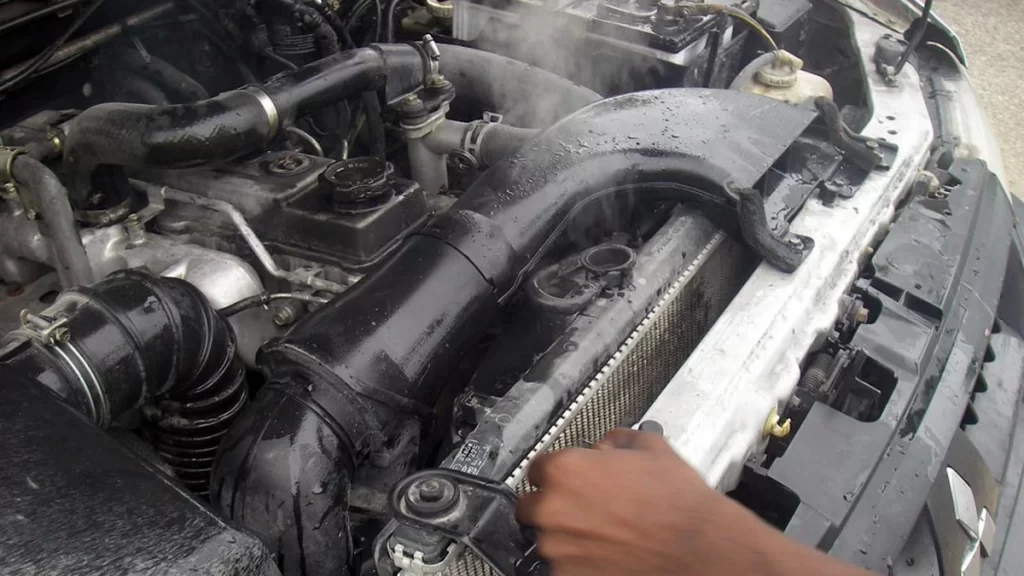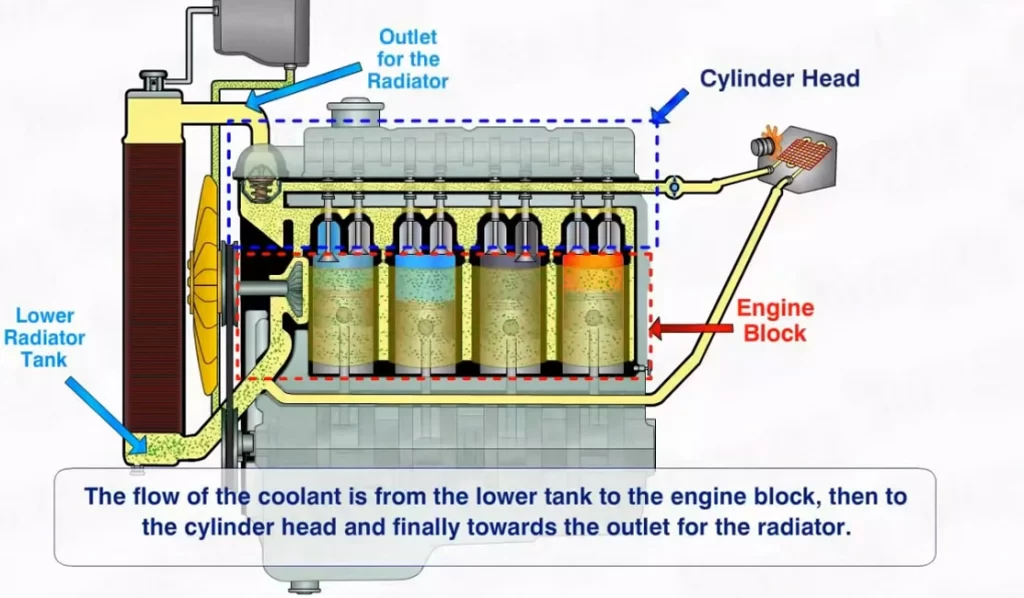If you own a car, you understand how important it is to keep it running efficiently. The temperature sensor is an important component that helps maintain appropriate engine efficiency and prevents overheating. When this sensor fails, though, it can cause a variety of issues that can damage your engine and leave you stranded on the side of the road.
We’ll go over the Symptoms of bad temperature sensor in an automotive, such as erroneous readings, engine performance concerns, overheating, cooling issues, and warning lights or codes, in this article.
We’ll also go over the causes of a faulty temperature sensor, how to diagnose and fix it, as well as preventative and maintenance measures to keep it running properly. Understanding the indications of a faulty temperature sensor can save you time, money, and aggravation in the long run, whether you’re a new car owner or a seasoned mechanic.
How a Temperature Sensor Works in Automobiles
A temperature sensor is an important component of an automobile’s engine management system that monitors the temperature of the engine and delivering real to the vehicle’s onboard computer. This data is used by the computer to regulate the temperature of the engine, which is crucial for maximum engine performance and longevity.
Types of Temperature Sensors in Automobiles
Temperature sensors in vehicles are classified into two types:
Thermistors and Thermocouples
Thermistors are the most prevalent form of temperature sensor found in modern automobiles. They operate by monitoring variations in electrical resistance caused by temperature fluctuations. Thermocouples, on the other hand, generate a modest electrical current in reaction to temperature variations by using two different metals.

How Temperature Sensors Operate
Temperature sensors are commonly found in the engine block or the cooling system. Coolant circulates through the engine and absorbs heat when it is running. The temperature sensor measures the coolant temperature and communicates the information to the onboard computer. The computer then uses this information to manage the flow of coolant in order to keep the engine operating at its ideal temperature.
The temperature sensor is linked to a wire, which provides the data to the computer as a voltage signal. The signal is interpreted by the computer and converted into a temperature reading, which is displayed on the dashboard or forwarded to a diagnostic tool for analysis.
Benefits of a Temperature Sensor
Temperature sensors are crucial for engine performance and longevity. They assist in the avoidance of engine overheating, which can cause catastrophic damage to engine components. The temperature sensor can help to ensure maximum engine performance and fuel efficiency by monitoring engine temperature and adjusting coolant flow.
Furthermore, temperature sensors can help to improve emissions by ensuring that the engine runs at the correct temperature, reducing harmful exhaust emissions.
Symptoms of a Bad Temperature Sensor in Automobiles
The temperature sensor in a car is critical for managing engine performance and preventing overheating. When this sensor fails, it can cause a slew of issues, including engine damage and leaving you stranded on the side of the road. We’ll go over the symptoms of a bad temperature sensor in an automobile, the causes of a faulty temperature sensor, how to diagnose and fix it, and prevention and maintenance suggestions to keep it running smoothly.
Symptoms of a Bad Temperature Sensor
There are several symptoms of a bad temperature sensor that you should be aware of. These include:
Inaccurate Readings
Bad temperature readings are the most prevalent indicator of a faulty temperature sensor. Even when the temperature remains steady, the temperature gauge may not move at all or may change irregularly. This can lead to engine temperature confusion, resulting in performance concerns and possibly engine damage.
Engine Performance Issues
A faulty temperature sensor can impair engine performance by causing low fuel economy, rough idle, or problems starting the engine. This is due to the engine computer’s reliance on the temperature sensor to maximize engine performance by adjusting fuel and timing.
Causes of temperature sensor failure in automobiles
If a temperature sensor in a cooling system fails, the engine can overheat owing to a lack of temperature regulation. If not rectified immediately, this might cause serious engine damage.
Causes of temperature sensor failure in refrigeration and HVAC systems
In some cases, a bad temperature sensor can cause a cooling system to malfunction, resulting in poor air conditioning performance or failure to regulate temperature in refrigeration or HVAC systems.
Symptoms of a bad temperature sensor triggering warning lights or error code
A faulty temperature sensor in modern automobiles and machines might result in a warning light on the dashboard or an error code on a diagnostic instrument. These warning lights or codes can signal a range of problems, the most common of which is a faulty temperature sensor.
Causes of a Bad Temperature Sensor:
There are several causes of a bad temperature sensor that you should be aware of. These include:
Tips for diagnosing temperature sensor wear and tear
Temperature sensors can degrade over time owing to excessive heat or cold, vibration, and other factors. As a result, they may malfunction or completely fail.
Understanding the causes of corrosion in temperature sensors
Corrosion can cause damage to the temperature sensor, making it difficult for it to read the temperature accurately. This can cause issues with the engine and other systems that rely on the temperature sensor.
Tips for diagnosing bad connections or damaged wires in temperature sensors
Bad connections or damaged wires can cause the temperature sensor to malfunction or fail altogether. This can cause inaccurate readings or cause the sensor to stop working altogether.
Improper Installation:
If the temperature sensor is not installed correctly, it can cause issues with the readings and performance. This can lead to engine damage and other problems.
When you repair or replace your vehicle’s mass airflow sensor [MAF], it needs a reset to start working. When it becomes too old and dirty, you will have to replace it with a new one or repair the old one by hiring a mechanic.
Common diagnostic tests and inspections for temperature sensor issues
If you believe that your temperature sensor is not working properly, you should have it tested and fixed by a skilled mechanic. They can run tests and check things to figure out what’s wrong and make the necessary repairs or replacements.

Understanding the role of temperature sensors in your vehicle
It is critical to do regular maintenance on your car to avoid damage to the temperature sensor. This includes repairing worn-out components as well as inspecting connections and wires for wear or damage. Frequent inspections and tune-ups can help identify flaws before they become major difficulties.
Personal experience for “symptoms of bad temperature sensor of automobile”
Assume you’re driving your automobile and notice that the temperature gauge is unusually high, despite the fact that the weather is mild and the engine isn’t hot to the touch. You may also notice that the engine is sputtering or running rough, and that the air conditioner is spewing warm air rather than cool air. You may also notice a warning light on the dashboard at this point, suggesting a problem with the engine or cooling system.
If you continue driving, you may notice that the engine is overheating, resulting in steam escaping from beneath the hood and a burning odor. The car may begin to slow down or stall, and you may struggle to restart it. At this point, you should probably pull over and call a tow truck, as driving the car any further could cause serious engine damage.
Once the car is in the shop, a mechanic may diagnose the problem as a faulty temperature sensor. They may conduct tests to confirm the condition before replacing the sensor. The automobile should now run smoothly and without any problems with the engine temperature or air conditioning.
FAQs related to the Symptoms of bad temperature sensor.
What does a bad temperature sensor in a car do?
A bad temperature sensor can cause a variety of symptoms, including incorrect readings on the temperature gauge, overheating, rough engine performance, and problems with the air conditioning.
How can I tell if my car has a bad temperature sensor?
The most common symptoms of a bad temperature sensor include an overheating engine, erratic temperature gauge readings, and issues with the air conditioning. You may also see warning lights on the dashboard indicating a problem with the engine or cooling system.
Can a bad temperature sensor cause my car to stall or not start?
In some cases, a bad temperature sensor can cause the engine to run poorly, which can lead to stalling or difficulty starting the car. If the problem is severe, the engine may not start at all.
We hope you’ve got the answer that you’ve needed for the question, “Symptoms of bad temperature sensor” reading our explanation. If you have more questions just leave a comment below, and we are really straightforward to help you further. If you need answers for the Jeep Cherokee Ignition Switch Bypass, check this link for it. Thank you.
